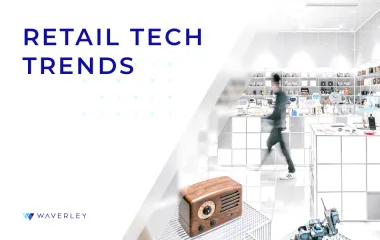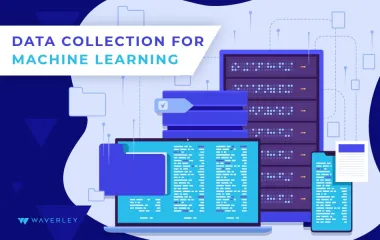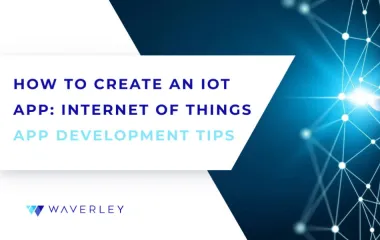Top 12 Technology Trends In IoT To Watch For In 2024
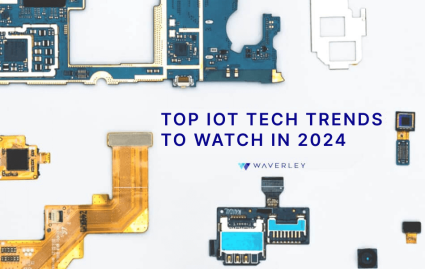
Contents
If technology continues at the pace that it is currently at, we can expect to see as many as 28 billion Internet of Things devices that are connected on the Internet by the year 2025. If you haven’t heard of IoT (Internet of Things) before, it refers to any ‘thing’ that is outfitted with sensors or technology which allows them to exchange data with other devices that are also connected to the Internet. Waverley is a company with a deep understanding and expertise in IoT applications working on the latest technology in IoT – if there is a developing IoT trend, we’ll catch it.
Waverley Software has worked with clients in numerous industries such as home automation, robotics, and energy analytics – all projects based on IoT development services. Coming from our experience with IoT applications and observing our recent projects, we came up with this list of IoT trends to watch in 2024 and moving forward. This article will brief you with all you need to know about the state of the industry!
IoT Market Overview

Statistics indicate that the IoT market is expected to develop at a CAGR of 26.1% over the coming years.
The IoT market revenue growth, in general, has a growth rate of over 21.3% for this current year. The change by segment is 21.4% meaning that currently, the IoT market volume has raised up to $1,387 bs.
The segments that are adopting IoT are Smart Finance, Smart Cities; Industrial, Healthcare, Consumer and Automotive IoT, among others. Out of these, the three sectors that have shown major growth are the Automotive, Industrial, and Smart Finance sectors, having a larger growth rate from 2022 up to 2024.
The following list is a short comparison of the market size by sector in 2022 and currently in 2024:
| 2022 | 2024 | |
|---|---|---|
| Automotive IoT | 300.30 | 494.20 |
| Consumer IoT | 173.90 | 192.40 |
| Healthcare IoT | 79.03 | 108.60 |
| Industrial IoT | 226.20 | 325.80 |
| Smart Cities | 74.24 | 104.80 |
| Smart Finance | 46.52 | 113.30 |
| Other IoT | 97.24 | 132.00 |
We now connect with our surroundings in a completely new way thanks to the IoT. It has penetrated our homes, offices, places we often visit as customers or patients. But what does this quickly developing technology’s future hold? Exciting trends and future developments are anticipated for the IoT, including the spread of 5G connectivity, the rise of edge computing, and much more.
Moving into 2024, we can expect a surge in IoT device usage. The overarching theme of IoT trends in the coming year will be the increasing ubiquity of smart devices that consumers and the average person will have the chance to interact with in their daily lives. Expect to see IoT market trends point towards devices becoming more affordable and introduced to household goods and found in common interactions in society.
- 5G Connectivity
- Machine Learning & AI
- Digital Twin
- Edge Computing
- Manufacturing & Agriculture
- Transportation & Supply Chain
- Energy, Buildings, Smart City
- Healthcare and Wearables
- Security & Data Regulations
- Smart Home & Customer Assistance
- Blockchain
In this article you will see a thorough description of each of the recently mentioned trends and future developments.
Internet of Things (IoT) Technology Trends in 2024
Moving into 2024, we can expect a surge in IoT device usage. The overarching theme of IoT tech trends in the coming year will be the increasing ubiquity of smart devices that consumers and the average person will have the chance to interact with in their daily lives. Expect to see IoT market trends point towards devices becoming more affordable and introduced to household goods and found in common interactions in society.
Sensors will play a key role in the functionality of IoT enabled devices. IoT sensors will create data from real-world observances that their sensors register and document. IoT devices will work around-the-clock to observe live changes in the environment that humans wouldn’t notice or don’t have the time to pay attention to.
Impact of COVID on IoT
The COVID-19 virus and the regulations passed to limit the spread of the virus have far-reaching effects on the state of Internet of Things trends, technology and devices. As there is a push to minimize contact and create physical distance between people due to COVID-19, IoT offers tools to accomplish this.
Enhanced safety precautions introduced from COVID-19 and the pandemic will create an increase in touch-less technologies that you may interact with on a daily basis. We will see more options for payment while checking out at stores. While traveling, the introduction of check-in services that do not require an agent will become more widespread. You may check-in and board your plane at the airport without an agent assisting you.
To increase public safety, COVID-19 IoT devices might help to manage the occupancy levels of venues or restaurants. Scanners at entrances and exits will be able to keep a running tally of how many people are inside at once in real time, so as to not overload the venue.
In terms of sanitation, sensors placed outside of restrooms, will be able to tell at what frequency and how many people have used the restroom in a given period of time. This will allow sanitation workers to clean according to use and not just according to time that has passed. IoT devices will be put in charge of monitoring air quality of spaces and perhaps increasing filtration when it is needed.
The future of IoT technology may play a bigger role in security since people are working from home, more security will be needed for devices that have access to company data. Phones and computers that are logged on to company servers will be the primary target of hackers, ransomware threats, and viruses. Companies will be forced to ensure that employees’ devices are secure and use IoT technology trends to make sure that no devices are compromised.
5G Connectivity
Being the next generation in cellular network technology, 5G will continue to be rolled out throughout the coming year. Surpassing the previous 4G ins every regard, 5G will bring more bandwidth and much improved download speeds to all devices. 5G is one of the top IoT technologies that will become widespread. The new power of 5G will allow for wireless data transfer speeds that we haven’t seen widely available yet. These high speeds will enable low device latency, alway-on connectivity, and larger coverage to impoverished parts of the world that may be lacking physical wireless connectivity infrastructure. We may begin seeing 5G implemented in IoT devices such as self-driving cars, real-time robotics, disaster recovery equipment – all IoT devices that need uninterrupted connection and heavy data usage.
Machine Learning and Artificial Intelligence
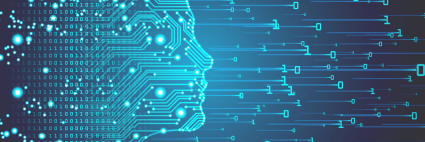
As more and more devices go online and users are on their devices at unprecedented levels, it is no longer feasible for humans to sort through data because the rate at which it is created is uncontrollable. Instead, we must resort to machine learning and artificial intelligence to help us manage the data and make use of it all.
Machine learning is using an algorithm that improves itself as it gains more data. This Internet of Things technology pairs perfectly with Big Data, which is a massive volume of data that old methods of data analysis can’t process efficiently. As Machine learning accumulates large amounts of data, it can make more accurate predictions. Intelligence IoT can provide companies with a competitive advantage allowing them to increase analytical and predictive abilities, boost risk management, scale faster, and identify money and time-wasting pitfalls within the company.
Artificial intelligence IoT examples might include robots that track inventory at warehouses, smart home appliances that learn users’ behaviors or preferences and adjust accordingly, and also self-driving cars that can correctly predict traffic situations.
Machine learning and Artificial intelligence IoT solutions will be implemented into self-driving cars that can predict traffic movements from vehicles and pedestrians or smart home devices like thermostats that adjust naturally to user’s preference or to the local weather conditions, we might see automated robots that scan and monitor stock in a warehouse or store.
Collaboration Between IoT and Edge AI Technologies
The fusion of IoT and edge AI technologies has the potential to revolutionize various industries and drive innovation in the digital age. It empowers real-time data processing, analysis, and decision-making at the network’s edge, leading to improved efficiency within IoT systems and a decrease of latency.
The collaboration of IoT and edge AI can be found in many different industries. Yet, we will focus on IoT devices utilizing edge AI for tasks such as image recognition and voice processing:
- Smart Security Cameras
These types of cameras, which are equipped with edge AI, have the ability to analyze video footage in real-time. It is no secret that they can perform facial recognition as well as they can detect objects and track motion. - Smart Home Assistants
Among the IoT devices that use edge AI are Amazon Echo, Google Home, and Alexa. They don’t have to completely rely on cloud-based computing in order to do speech recognition tasks, particularly those involving natural language processing. - Wearable Devices
There are other monitoring devices such as fitness and health trackers, smart watches and more. When looking to analyze biometric data, such as heart rate, sleep and other activities in real-time, these wearable devices have become a real gamechanger, accompanying us throughout our daily lives, catching inconsistencies in a heart rhythm and notifying a physician if needed.
Digital Twin
A digital twin is another developing IoT trend and what it does is exactly as you might expect. It is a virtual asset that corresponds directly with a physical object. This allows for the object to be thoroughly tested digitally before it is implemented into the real world. Using real-world data, a Digital twin can provide accurate simulations of how the program would function in the real world without risking security or resources by demoing it on a live service. A digital twin is an emerging Internet of Things technology that is useful for saving money as well as for testing. Digital twin technology may benefit the manufacturing, automotive, and healthcare industries by allowing them to check production processes, model traffic conditions, and work to predict patients’ health based on comparing vitals digitally – all in real-time.
Edge Computing
Edge computing allows for us to get shorter response time and save bandwidth. Edge computing considerably reduces the amount of data to be transmitted, the traffic, and the distance this data has to travel. Edge computing will shorten the trip for data by placing the user closer toward the data or server that they actually need to be using.
In the age of Big Data, which is huge amounts of information that grows exponentially, there is seemingly limitless data being created, the physical infrastructure can only handle so much at a time. Edge computing will allow for less frequent slow-downs in speed when many users are using the network at the same time. This type of IoT technology will help with processes deliveries and self-driving vehicles.
The emergence of edge computing in the IoT has changed how data is processed and evaluated. Edge computing moves data processing and analytics closer to the edge devices themselves rather than being developed on centralized cloud servers.
Edge computing is important because it improves offline operation in disconnected contexts, increases data privacy and security by processing sensitive information locally, providing scalability and flexibility in IoT deployments. This being said, by bringing computing power closer to the data source, edge computing speeds up the transfer of data processing.
By decentralizing computational power and data storage, edge computing makes it possible to process data in real-time and decreases latency. It moves processing power closer to the point of data generation rather than depending on centralized cloud infrastructure.
Now, there are a lot of benefits of edge computing, but let’s look at them in terms of:
- Enhanced Security: By processing data locally at the edge of devices or edge servers, edge computing reduces the exposure of sensitive information to potential security threats.
- Improved Efficiency: Efficiency is increased by offloading computational workloads from the core cloud infrastructure through edge computing. Greater resource efficiency, faster reaction times, and less network congestion are all made possible by local processing and analysis at the edge devices.
- Reduced Bandwidth Usage: Edge computing allows for a decrease in utilization by filtering, collecting, or compressing data locally before sending it to the cloud. In this manner, the amount of data that needs to be carried over the network is kept to a minimum, resulting in lower bandwidth costs and better performance.
Industry IoT Market Trends in 2024
Manufacturing and Agriculture
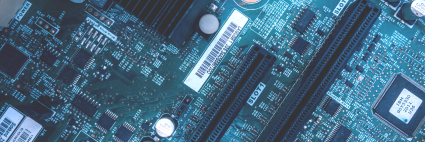
Manufacturing and agriculture is the most popular of the sectors to include IoT applications. This sector may have been slow to undergo a digital transformation, but it is quickly introducing new technology trends into the field. Using sensors and other connected devices, the agricultural and manufacturing fields will benefit from the digitalization of product operations.
Expect to see production floor monitoring, automation of quality, management of assets, and smart devices to track workers’ safety and productivity – all possible with data analytics and Internet of ThingsSmart farms are already starting to gain an edge on the competition by using Internet of Things technologies for precision agricultural practices, monitoring livestock health, automated drones that can map fields and even spray crops.
These farms can also make use of IoT sensors to check weather conditions, soil moisture, and chemical balances. With the influx of industrial IoT usage in the agricultural and manufacturing sector, businesses will be able to make more data-based decisions, minimize downtime, create high-quality products with less effort, and come to see increased profits and enhanced efficiency across the board.
Transportation and Supply Chain
The transportation and mobility sector is the second largest area for IoT application in 2022. The transportation sector is expected to continue increasing IoT adoption. This sector benefits from technologies like fleet management, route coordination, driver behavior tracking, and vehicle diagnostics and monitoring. Using IoT technologies, fleet uptime will be increased, strategic route-mapping will reduce fuel consumption, as well as vehicle sensors making it safer for drivers and pedestrians.
Predictive maintenance, using algorithms and sensors to determine when maintenance should be done, will certainly be used to make sure the vehicles and facilities are always running smoothly. IoT solutions won’t just come in the form of vehicles either, IoT platforms and connected devices can engage mobility properties like warehouses, docks, and shipping yards to make them all run more streamlined.
Being able to monitor the condition and inventory at warehouses, you can minimize product losses, adjust energy and fuel consumption needed for heating or conditioning, and keep track of every single item.
IoT applications like outdoor sensors will be used at these facilities and can monitor weather conditions to help arrange the optimal time for departures, arrivals, and loading for locations dependent on weather.
Energy, Buildings, Smart City
With the growing size of city populations, there comes a strain on resources so a need to streamline and make distribution of resources as efficient as possible appears. Cities may quickly undergo a digital transformation and adopt IoT applications to fit their needs. Now and in the near future, we are going to see smart utilities and buildings that are outfitted with sensors will work to collect data and optimize the use of water and electricity, determine amounts of waste disposal, and recognize safety measures for inhabitants. Smart cities may very well become a top IoT sector in the coming years.
Urban planners and city authorities may make use of IoT platforms for traffic counters, cameras, and other sensors to improve how a city is arranged, how transportation functions, and increase public safety in general. Implementing more efficient systems in a city can reduce frustrations for its inhabitants. A use case of this is to register how much traffic occurs at certain times of the day and modify traffic lights to accommodate increased vehicle loads. IoT solutions for energy usage are an essential aspect of digital transformation for energy industry, as they involve the analysis of grid data and optimizing energy generation, transfer, and usage in real-time. An example of this would be sensors in cities that would dim street lights in areas that do not get much traffic at certain hours of the night.
Healthcare and Wearables
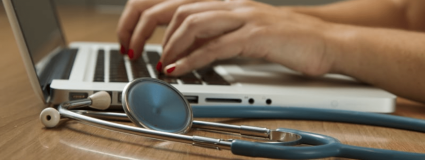
During the COVID-19 pandemic, we saw skyrocketing use of online healthcare consultations. For some higher-risk patients, it became too dangerous to visit the doctor for checkups so they resorted to virtual consultations, digital diagnostics, and even the ability to receive real-time remote treatment from the safety of their home. The healthcare field became a top IoT sector during the recent health crisis and, moving forward, this tech may be known as the Internet of Medical Things. IoT-enabled applications will serve to be able to keep track of vitals of patients throughout the day via their wearables or other connected devices, this will allow for data-driven insights on the patient.
Healthcare branches such as elderly care or assisted living rely on the constant status of their patients’ health and safety, so IoT devices like wearables will be preferred tools in the medical field. IoT solutions like smart devices (such as pacemakers) work to help people living with heart disease a purposeful life and also monitor their vitals and other metrics in the most efficient way possible. The Internet of Medical Things may be the missing piece of technology that truly helps many patients and healthcare workers achieve constant and accurate care.
But how significant is it? The healthcare sector has been greatly benefited by IoT. IoT gadgets and sensors have made remote patient monitoring possible. This makes it possible for medical staff to keep an eye on patients’ vital signs and other health conditions in real time. IoT has also facilitated the development of innovative healthcare solutions such as wearable technology, smart hospitals, and telemedicine.
The Use of IoT Devices
Remote Patient Monitoring: Professionals from the healthcare sector can monitor their patients’ vital signs, medical problems and more thanks to IoT devices like wearables equipped with smart sensors, and connected medical devices.
Telemedicine: Telemedicine enhances access to the healthcare industry. Doctors can assess patients remotely, monitor their illnesses, and issue recommendations or prescriptions thanks to IoT-enabled devices. Such devices can vary from video conferencing tools, to smart cameras or special apps.
Personalized Healthcare: By combining massive amounts of patient data with cutting-edge analytics and machine learning techniques, we can now create next-generation healthcare systems, tailored to each patient. This comprises physiological data, lifestyle information, and other behavioral patterns that can be gathered by IoT devices.
But, are there any problems that you may face with IoT and healthcare devices?
Making sure patient data gathered by IoT devices is secure, access is only given to verified users. It is also a fact that interoperability and platform integration of multiple IoT systems and platforms can pose a challenge and become a potential bottleneck, as it slows down the system and might cause performance and accuracy issues if not done properly.
Personalized medicine, real-time monitoring, and remote treatment are just a few of the many opportunities that are available to improve patient outcomes and provide wider access to healthcare. The vast amount of data generated by IoT devices offers opportunities for data-driven insights, predictive analytics and so much more.
The IoT continues developing from an innovative but understudied technology into a reality that surrounds us. We are now at a new level of digitization thanks to almost every device becoming smart. IoT devices in healthcare are essential not only for convenience and speed, but also to help save human lives.
In light of this, the term “Internet of Healthcare Things” (IoHT) or “Internet of Medical Things” (IoMT) is used to describe the smart healthcare gadgets. All medical hardware and software that internet computer networks utilize to link to healthcare information technology systems are referred to as IoHT or IoMT.
The IoMT has several unique applications across various healthcare domains. The following are two examples:
- Remote Patient Monitoring
With the use of a mobile or web app, the patient will be able to connect with the healthcare provider. This solution is perfect for patients with chronic diseases and limitations when it comes to traveling long distances. Furthermore, they give doctors an accurate and timely insight into any changes in the patient’s well-being. - Telemedicine & Telehealth
Closely connected to RPM since a doctor will receive medical IoMT data to make further decisions about a patient. This includes prescribing personalized medication. - Medication Adherence
This includes electronic pillboxes that alert users to take their medications at the appointed time. IoMT devices can be used to monitor medication intake and alert caregivers or medical personnel when doses are missed. - Emergency Response Systems
The Internet of Medical Things (IoMT) is already enhancing emergency response systems by fusing medical devices and sensors with centralized monitoring systems. It automatically sends notifications to the ER when a wearable gadget has detected alarming changes in the patient’s pulse, breathing, temperature and other health indicators. - Preventive Healthcare
IoMT gives people the autonomy they need to take charge of their health and receive early alerts about potential problems. Patients can learn more about various health measures, such as tracking their vital signs and sleeping patterns, etc.
Furthermore, several recent developments in the IoMT are revolutionizing the healthcare sector by enabling remote monitoring and enhancing patient outcomes. Wearable technology, sophisticated hospital design, and real-time health data analytics are a few of many.
Security IoT Market Trends
Data Security
Data security is a big issue in the IoT market due to the rise of linked devices and potential security flaws. As the IoT ecosystem matures, healthcare organizations and other industries must prioritize data security to protect sensitive data. IoT devices used in healthcare applications like remote patient monitoring and telemedicine must have robust security features to guard patient data from unauthorized access or malicious attacks.
The IoT security market is expanding for businesses that offer solutions to IoT security issues, including network security, endpoint security, application security, and cloud security. Despite any current difficulties, it’s critical to address data security in IoT market trends to safeguard private data, ensure the accuracy of patient data, and foster trust in IoT-enabled healthcare solutions.
Governance and Regulation in the IoT Space
The Data Act looks to enforce stricter rules on data collection, looking to protect smart devices, specifically addressing data generated by IoT devices and its related services. This proposed legislation is intended to make it simpler for organizations, government agencies, and people to access and use the data generated by IoT devices and other connected services.
Additionally, governments and regulatory organizations throughout the world are becoming more aware of the need to address security and privacy issues posed by IoT devices. This resulted in an increase in the global trend of new IoT rules and global trends in IoT laws.
- EU and US regulations
Initiated regulations aim to enhance the security and privacy of IoT devices. Include the General Data Privacy Regulation in Europe or the EU’s Cybersecurity Act released in 2019. - Local and global standards
Governments and other organizations collaborate to ensure products will fulfill the necessary security demands. Firms are subject to state, federal and international legislation. - Security regulations
Legislation must be established in order to prevent security breaches on IoT devices. This legislation ought to include security specifications for things like multifactor authentication, strong passwords, and secure credential storage.
In general, attempts to strengthen device security, protect privacy, set standards and encourage sustainable IoT adoption have been the biggest area for improvement in recent years. China has also been actively promoting the deployment of IoT while addressing privacy issues regarding smart devices.
China offers a 3 year plan for IoT adoption which aims to accelerate development and implementation of new technology in IoT. The purpose is to increase IoT infrastructure, encourage innovation, and handle various privacy issues. In other words, the three-year strategy acknowledges the need to strike a balance between IoT expansion and privacy protection while also aiming for economic growth. These laws represent China’s response to security issues and are part of the three-year plan:
Regulations and Laws
There are several regulations that China has implemented in order to keep IoT devices safe. These laws outline both the duty of information processors and the rights of individuals, thereby assisting in the preservation of user privacy and data. Such laws include the following:
- Cybersecurity Law (CSL)
- Data Security Law (DSL)
- Personal Information Protection Law (PILP)
Security and Data Regulations
While connected devices have a multitude of benefits, a critical downside to this technology is that, if a device isn’t secure, it can allow for network vulnerabilities in case there’s a breach because said device likely interacts with other devices on the network. Once the malware accesses the whole system, even more, malicious activity can be conducted. User’s privacy and sensitive information – corporate information will also be at risk. Both types of users will have to take extra precautions when it comes to having an array of connected devices that could possibly compromise their personal data.
The use of real-time vulnerability scans, endpoint detection, and response tools, and using dedicated wireless networks are some of the best ways to strengthen personal or corporate security. IoT technologies from Blockchain to ML will help create more advanced security abilities such as stronger encryption solutions and the ability to use data analytics to recognize suspicious behavior patterns. With that, expect governments to attempt to regulate data collection – we are already seeing this with the onset of GDPR and CCPA. Guarding personal data may be a recurring issue with IoT tech.
Consumer IoT Trends
Smart Home and Customer Assistance
One of the IoT tech trends that will keep expanding is the use of IoT devices in the home and in daily interactions. We continue to become accustomed to interacting with virtual assistants in our daily lives – from assistants found within the screen to hardware interfaces we might see at the local shopping center or bank. Virtual assistants can be present in different forms like a voice-activated assistant on your phone or a chatbot on your favorite brand’s website. The function of these digital assistants is to help us find information, solve problems, verify our identity, and even perform real-world functions like ordering a pizza. Within ‘smart homes’, we will see virtual assistants, in the form of smart devices, adjust and learn your habits. Your thermostat will learn that you like to heat the house in the morning during colder days and will begin doing that automatically for you. Smart homes with IoT tech will allow smart light bulbs, heating and cooling systems, and other household appliances to optimize for your preferred conditions.
Blockchain – One of the Top IoT Trends
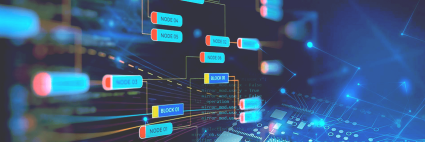
A term that you will continue to hear more about moving into 2024 is Blockchain and it is certainly one of the IoT tech trends to watch. Simply put, Blockchain is a digital record of transactions that occur. It works similar to a ledger, but transactions are stored across multiple devices so there is no one owner of the transactions. In the near future, IoT Blockchain technology will likely be used to keep data accounted for on a host of devices so that there is less downtime and faster movement of data. Another benefit of Blockchain technology is that the record of transactions are tamper-proof – the record can only be added to but never edited.
Blockchain can be used as a reliable keeper of bits of data since it is inviolable. It can be used to track where produce is grown, who picked it, at which times it reached certain facilities – all with perfect accuracy. In a global economy, we can expect that a single product may contain materials from a multitude of countries. Blockchain will play a part in the future of IoT usage because it enables all parties to track the progress of a product during manufacturing, transportation, and sales.
IoT Data Analytics and Visualization
For IoT-generated data to reach its full potential, data analytics and visualization are crucial. The IoT’s rapid expansion has greatly increased the enormous amount of data that IoT devices generate in a variety of industries, including healthcare, energy, transportation, smart cities, and others.
With the use of data analytics, you may manage and assess vast amounts of data in order to get in-depth knowledge and make quick judgments. You can also utilize more sophisticated analytics approaches, such as machine learning and predictive modeling, to find patterns, identify anomalies, and derive relevant business information from IoT data.
There are several advanced tools for data analytics and visualization. These are crucial because they give businesses the ability to evaluate and make sense of the enormous volume of data that IoT devices generate. These IoT technology trends are useful for a variety of purposes, including converting unprocessed Internet of Things data into a format that is better suited for analysis. They also offer a means of visually and intuitively representing the data that has been evaluated. Advanced analytics tools also make it possible to apply a variety of analytical methods to IoT data in order to extract insightful information.
IoT data analysis is crucial for improving decision-making, optimizing processes, and enabling predictive maintenance, in short. These enable the real-time collection of data from connected devices and the use of that data to guide decisions and actions by utilizing the capabilities of IoT sensors. Each of these domains has benefited from IoT data analytics in the following ways:
- Enhanced Decision-Making
You may gain a greater knowledge of how sensors work via data analytics. By analyzing enormous amounts of sensor data, it can assist you in identifying trends, identifying abnormalities, and making data-driven decisions. - Processes Optimization
You can detect inefficiencies, streamline operations, and decrease downtime with IoT data analytics to optimize processes. Monitoring and analyzing IoT data in real-time enables early detection of probable faults or potential risks. - Predictive Maintenance
IoT methods are used to predict when equipment breakdowns are likely to occur based on real-time sensor data, predictive maintenance uses IoT data analytics as a key enabler.
Conclusion
As IoT technologies advance, we will see more widespread adoption of IoT systems and an influx of applications – much more than described in this article. There are currently 34,000 that are making use of IoT technology, which is a 27% increase from the previous year. Future IoT developments seem limitless, as new brilliant ideas are launched and ingenious IoT products are created, we will see the world becoming a more efficient and comfortable place to be.
FAQ
What is IoT, and why is it important?
The “Internet of Things” (IoT) is a network of physically connected gadgets, vehicles, and other items that have sensors, software, and network connectivity for data collection and sharing. It is, to put it briefly, the concept of connecting everyday objects to the internet and enabling them to communicate with one another and us.
Which is the future application of IoT?
Future IoT applications are very versatile.. In Healthcare that’s smart medical equipment, tailored treatment, and remote patient monitoring. IoT will be used by smart cities to streamline resource management, enhance urban planning, and other tasks. Automation, predictive maintenance, and supply chain optimization enabled by industrial IoT will alter production processes. IoT will also improve wearable technology, home automation, and smart energy management, enabling more pleasant and energy-efficient living.
What are the key technologies driving the Internet of Things (IoT)?
The technologies vary from wireless connectivity tools such as wifi, bluetooth and LTE to back-end technologies such as C++, front-end (for IoT Apps) such as React, etc. Then there is sensor technology, which helps to detect and measure different parameters like temperature, motion, light, etc. Machine Learning tools such as Tensorflow or PyTorch can be used to process the data gathered by IoT devices.



